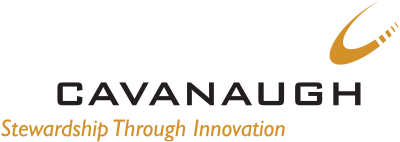I attended two stakeholder meetings in Raleigh on Monday, June 23, 2014 – one at 10:00 a.m. relative to the Swine Waste-to-Energy set-aside and the renewable energy portfolio standard, and a second one at 1:30 relative to the Poultry set-aside. The purpose of these stakeholder meetings was to provide an opportunity for the utilities operating in North Carolina, the N.C. Utilities Commission, project developers and stakeholders from the agricultural production companies and other interested parties to engage in a discussion about the status of utility compliance with the Senate Bill 3 requirements, as well as to offer suggestions on how the process may be improved to result in better compliance in the future.
The following summarizes the major themes and notes form these meetings. While the discussions were detailed and engaging, these were the primary concepts that were discussed:
Swine Waste-to-Energy set-aside
-
Transparency – Several of the participants in the stakeholder meeting cited a need for greater transparency in the communication of prices for Renewable Energy Credits (REC’s). Thus far, the prices for swine waste REC’s have been established through private negotiations that have been kept confidential under non-disclosure agreements. While the group understands that, individually, this may provide safety and security, it creates a vacuum of information relative to what the “going rate” is for a swine REC. Several folks that participated asked for the REC prices to be made public, similar to other market transactions, such as the stock exchange, or as is the case for carbon credits.
-
Supply-risk abatement- One of the key issues that was brought to the table by both utilities and producers was the risk associated with fuel supply. While the Pork Council and producers are confident that the industry, as a whole, will remain intact for a long time, there is concern on an individual farm-by-farm basis when a 10 year fuel supply agreement (or even in some cases 15 or 20 years) is required. The typical fuel supply agreement states that the swine farmer will produce a minimum amount of manure every year for at least 10 years, which will guarantee a certain amount of energy generation for the same period of time. Swine farming, like all farming, is a commodity business subject to a lot of environmental constraints. For example, a virus just struck the industry with vigor, causing the reduction in population, and even depopulation, of some farms to regain control over the virus to stop its impact. The reduction in population or depopulation of some farms for short periods of time would have led to a violation of the fuel supply agreement, as the animals were not on site to produce the manure. In the case of typical REC agreements, this risk comes at a cost that would have to be paid by the farm owner. Farm owners have not typically been in favor of taking on that risk, as they are not guaranteed they will have always have a minimal amount of pigs on their farm. The same applies for poultry.
The group discussed several ways in which this risk may be abated, but no finite conclusion was derived. This is a big issue that must be overcome, there were some discussions on allowing the Utilities to comply with their requirements by using the act of contracting for the swine REC’s to be generated as the success metric, rather than their compliance being based on the actual generation of swine REC’s. In this case, the utilities would be gauged as successful or unsuccessful simply by engaging in contracts for the generation of REC’s, regardless of how many were actually generated. This of course creates a lot of complexity, as you may have situations where some folks inadvertently contract for more REC’s than could ever realistically be produced, and therefore the state would not be meeting its goals.
These were the two key concepts, or issues, that were discussed in the swine waste REC stakeholder meeting.
Poultry Waste-to-energy Set-Aside
As for the Poultry Waste stakeholder meeting, ‘transparency’ was again voiced as a chief concern, however it was learned in this meeting that a large portion of the utility requirements for poultry REC’s has been contracted for the year 2014, and so it seems they are having more success with poultry REC’s. The utilities stated that they are having much more success finding poultry REC’s generated outside the state, and they are typically much less expensive than poultry REC’s generated inside the state of North Carolina. The group agreed we need to learn what is causing the differential in price, and try to improve that situation for the State of North Carolina. Some examples that were sighted by developers who operate in other states are ‘other incentives’ and tax credits that are given that help create poultry waste-to- energy systems, and they in turn sell the REC’s in North Carolina where there is an established marketplace.
The utilities were in unison that they will file a motion for additional delay in the compliance schedule for swine REC’s for 2014. While some Utilities felt it necessary to do the same for poultry, others did not. The observation I made during the course of the discussions is that the utilities will probably stand together and request a delay for 2014 poultry REC’s, as well.
As the leader of the resource stewardship group, and as renewable energy is a primary focus of this group, I thought you would find these notes interesting. Please note, these are my observations and not the official minutes of the stakeholder meeting. The notes and minutes should be made available, as this was a public meeting, and will be available to our group as well. I will pass them along when they are made available.

